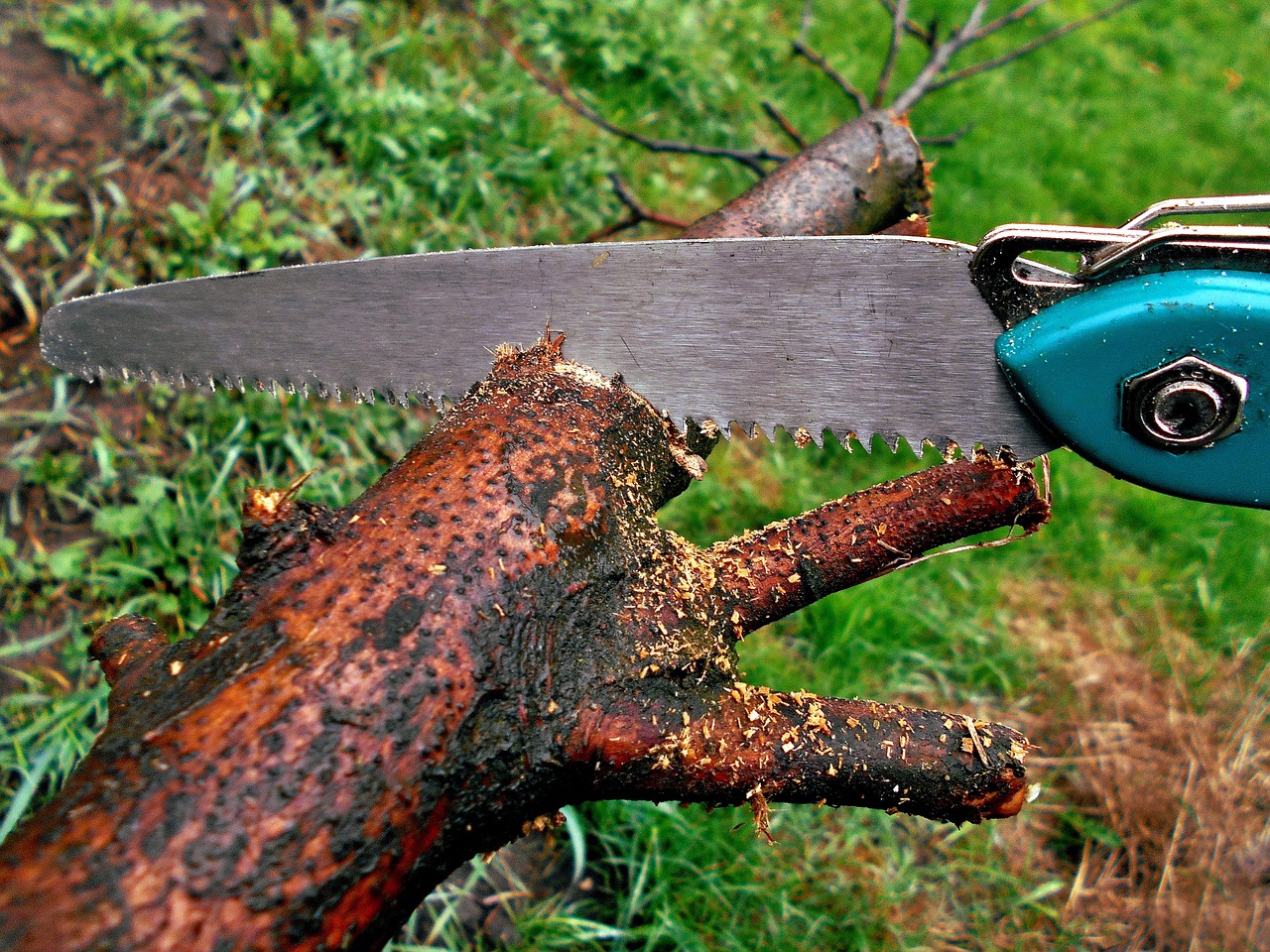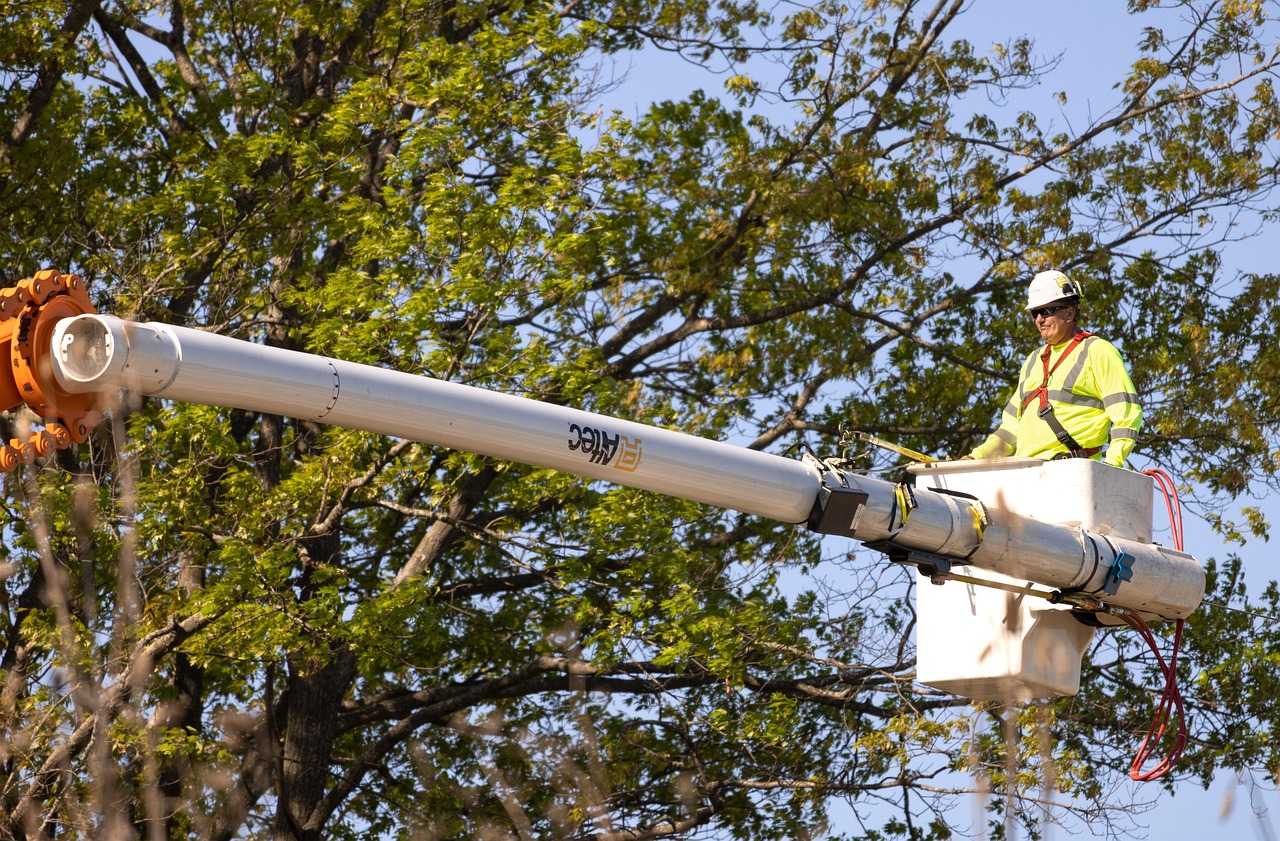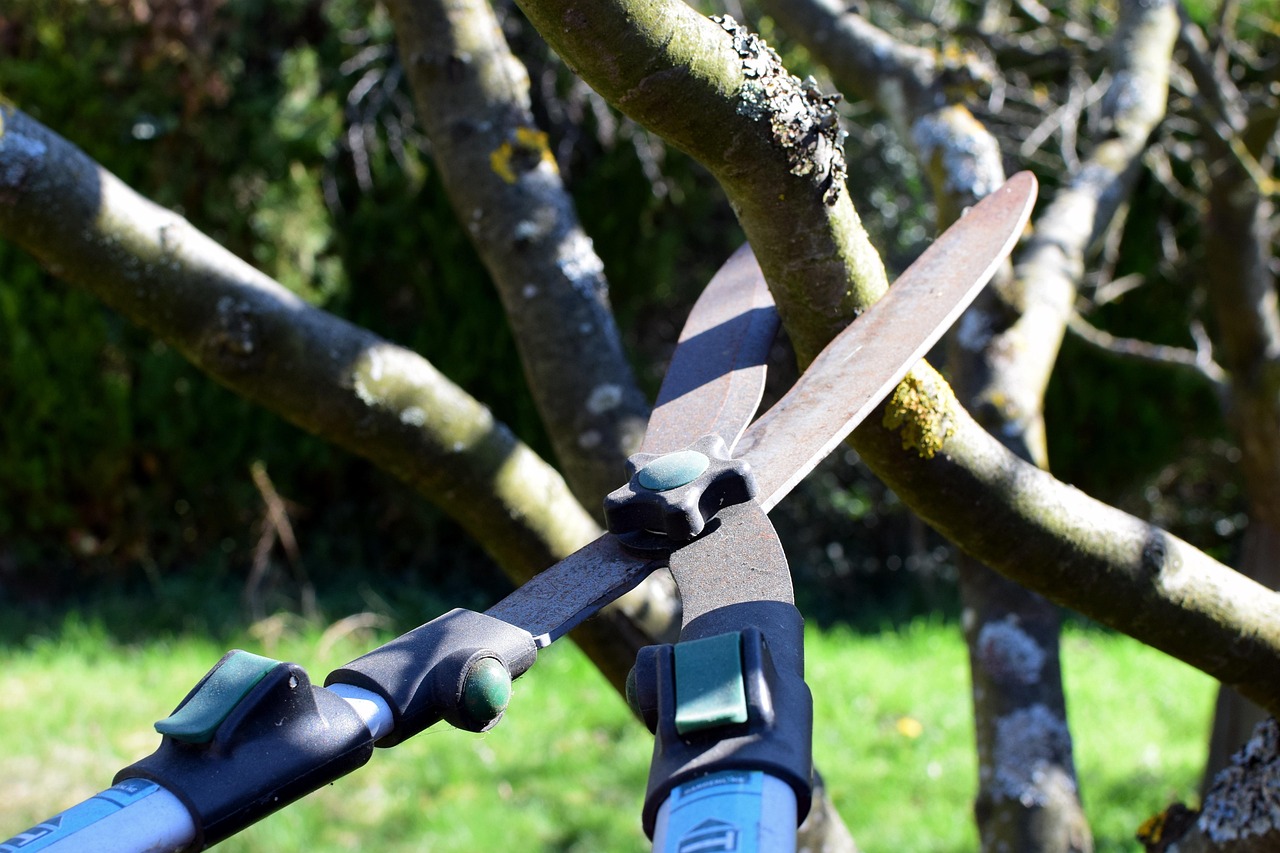Pruning large trees safely without using heavy equipment involves using proper tools, techniques, and safety measures. Hand tools like pruning saws and loppers are essential. Always wear protective gear and follow safe practices to avoid injuries while ensuring the health of the tree.
Pruning is an important aspect of tree care. It helps maintain tree health, encourages growth, and improves aesthetics. For large trees, it can be a daunting task, especially if you think you need heavy equipment. However, with the right approach and tools, it is possible to prune effectively and safely without relying on machinery.

Understanding the reasons for pruning large trees is crucial. Pruning can address various issues, such as removing dead or diseased branches, improving light penetration, and reducing the risk of branch failure. Proper pruning techniques can also help shape the tree, allowing for better air circulation and growth.
Tools for Pruning Large Trees
When pruning large trees, selecting the right tools is essential. Using the wrong tools can lead to damage to the tree and increase the risk of injury. Here are some commonly used hand tools:
- Pruning Saw: Ideal for cutting larger branches that are too thick for loppers.
- Loppers: Great for cutting branches up to two inches in diameter.
- Hand Pruners: Best for small branches and detailed work.
- Rope and Harness: Useful for climbing safely when necessary.
- Safety Gear: Includes gloves, goggles, and hard hats to protect against falling debris.
Using the right tools not only makes the job easier but also ensures that the tree remains healthy after pruning. It is important to keep your tools sharp and clean to prevent any damage to the tree and minimize the risk of disease transmission.

Techniques for Safe Pruning
Effective pruning requires knowledge of proper techniques. Here are some key practices to follow:
- Assess the Tree: Before starting, evaluate the tree’s structure and health. Identify which branches need to be removed.
- Use the 3-Cut Method: For larger branches, use this technique to prevent tearing. Make a notch cut on the underside, then cut from above to remove the branch.
- Avoid Topping: This practice can severely damage trees. Instead, prune back to a lateral branch.
- Trim at the Right Time: Prune during dormancy in late winter or early spring for most species.
The 3-Cut Method is particularly useful for larger branches. It reduces the risk of tearing the bark and damaging the tree. By making a small notch on the underside first, you create a controlled point for the branch to fall without causing harm.
Safety Considerations
Safety should always be a priority when pruning large trees. Here are some important safety tips:

- Wear Protective Gear: Always use gloves, goggles, and helmets to protect yourself from falling debris.
- Inspect Your Tools: Ensure all tools are in good condition before use. Dull blades can cause accidents.
- Check for Power Lines: Be aware of nearby power lines. Avoid working within ten feet of them.
- Have a Spotter: If working high up or on a ladder, have someone assist you on the ground to monitor for hazards.
By adhering to these safety measures, you can significantly reduce the risk of accidents while pruning large trees. Always take your time and don’t rush through the process.
Environmental Benefits of Pruning
Pruning not only benefits individual trees but also contributes positively to the environment. Healthy trees provide numerous ecological advantages:
| Benefit | Description |
|---|---|
| Improved Air Quality | Trees absorb pollutants and release oxygen, enhancing air quality. |
| Biodiversity Support | Healthy trees provide habitats for various species of birds and insects. |
| Erosion Control | The roots of healthy trees help prevent soil erosion by stabilizing the ground. |
| Climate Regulation | Trees play a vital role in regulating temperatures and improving local climates. |
Caring for large trees through proper pruning practices not only maintains their health but also supports broader environmental goals. By ensuring that trees thrive, we contribute to a healthier ecosystem.

This approach to pruning large trees without heavy equipment not only empowers individuals but also promotes sustainable tree care practices that benefit both people and the environment.
Planning Your Pruning Project
Effective pruning begins with careful planning. Before starting the task, it is important to assess the tree and create a strategy. A well-thought-out plan can lead to better results and safer practices.
Assessing the Tree’s Condition
Begin by examining the tree for any signs of disease or damage. Look for:
- Dead or Dying Branches: These should be removed to prevent decay from spreading.
- Pests and Insects: Check for signs of infestation that may require treatment.
- Fungal Growth: Mushrooms or other fungi can indicate underlying issues.
- Growth Patterns: Observe how the tree is growing. Is it too dense? Are there any crossing branches?
Taking note of these factors can help you make informed decisions about what to prune. It will also guide you in determining the best time for pruning, as some trees have specific seasonal needs.
Creating a Pruning Schedule
Once you have assessed the tree, it’s time to create a pruning schedule. Consider the following elements:
- Seasonal Timing: Most trees are best pruned during their dormant season, typically late winter or early spring.
- Frequency: Evaluate how often you need to prune based on the growth rate and health of the tree.
- Weather Conditions: Plan your pruning days for dry weather to avoid slipping or injuries.
A well-defined schedule will help you stay organized and ensure that your tree gets the care it needs at the right times. Remember to take breaks during long sessions to avoid fatigue.
Pruning Techniques for Large Trees
Different techniques are suitable for various types of pruning. Understanding these methods will enhance your ability to manage large trees efficiently.
Crown Thinning
Crown thinning involves selectively removing branches to improve light penetration and air circulation throughout the tree. This technique helps in promoting healthy growth. Here are some guidelines:
- Selective Cutting: Remove 10-20% of the tree’s foliage in a season. Avoid cutting too many branches at once.
- Target Smaller Branches: Focus on smaller, weaker branches rather than larger ones to maintain the tree’s overall structure.
Crown Raising
Crown raising is the practice of removing lower branches to elevate the tree’s crown. This technique is often used to enhance visibility or clear pathways. Key points include:
- Choose a Height: Determine how high you want the crown raised based on your needs.
- Remove Lower Branches: Cut lower limbs carefully, ensuring not to remove more than one-third of the lower branches at a time.
Crown Reduction
This method reduces the size of a tree’s crown while maintaining its natural shape. It is particularly useful for large trees that may be encroaching on structures or power lines. Steps include:
- Avoid Topping: Never simply cut off the top of a tree, as this can lead to severe damage.
- Cut Back to Lateral Branches: Make cuts at a lateral branch that can support new growth.
Common Mistakes to Avoid While Pruning
Avoiding common mistakes can ensure a healthier outcome for your trees. Here are some pitfalls to watch out for:
| Mistake | Description |
|---|---|
| Topping Trees | This can lead to excessive sprouting and weaken the tree’s structure. |
| Improper Cuts | Making cuts too close or too far from the branch collar can hinder healing. |
| Ignoring Safety Protocols | Neglecting safety measures can lead to injury and accidents. |
| Over-Pruning | Removing too much foliage can stress the tree and affect its health. |
By being aware of these mistakes, you can better prepare yourself for successful pruning sessions. Taking your time and being mindful will yield better results in maintaining your large trees.
The Role of Post-Pruning Care
After pruning, it is essential to take care of the tree to support its recovery and health. Here are some post-pruning care tips:
- Monitor for Pests: Keep an eye on the tree for any signs of pest activity after pruning.
- Watering: Ensure the tree receives adequate water, especially during dry spells.
- Nourishment: Consider applying fertilizer if necessary, based on soil tests and tree needs.
- Avoid Stress: Limit other stressors, such as foot traffic near the base of the tree, during recovery.
Caring for a tree after pruning is just as important as the act of pruning itself. By following these practices, you help ensure that your tree remains healthy and continues to thrive in its environment.
Signs of Tree Health and Issues
Understanding the signs of a tree’s health is crucial for effective pruning and overall care. Recognizing both healthy indicators and potential issues can help you make informed decisions regarding tree maintenance.
Indicators of a Healthy Tree
A healthy tree exhibits several positive characteristics. Here are some signs to look for:
- Vibrant Foliage: Leaves should be bright green and plentiful, indicating good photosynthesis.
- Strong Structure: The trunk should be straight, and branches should be well-distributed and sturdy.
- Active Growth: New growth, such as buds and shoots, is a sign of a thriving tree.
- No Signs of Infestation: A lack of pests or disease on the leaves and bark is essential for tree health.
Monitoring these signs regularly can help you maintain the tree’s health effectively. If you see any changes, it may be time to reevaluate your care practices.
Pest and Disease Indicators
Identifying issues early can prevent more serious problems later on. Here are some common signs of pests and diseases:
- Discolored Leaves: Yellowing or browning leaves may indicate nutrient deficiencies or disease.
- Wilting or Dropping Leaves: This can be a sign of water stress or pest infestation.
- Bark Damage: Cracks, peeling, or holes in the bark may suggest pest activity or fungal infections.
- Mushroom Growth: Fungi near the base of the tree often indicate decay or root rot.
If you notice any of these signs, it is essential to take action promptly. Consult with a professional arborist if necessary to diagnose and treat the problem effectively.
Using Natural Remedies for Tree Care
For those interested in organic gardening and sustainable practices, there are several natural remedies that can support tree health. Here are some popular options:
Natural Pesticides
Many natural substances can deter pests without harming beneficial insects. Consider using:
- Neem Oil: Derived from the neem tree, it acts as a natural insect repellent.
- Insecticidal Soap: Effective against soft-bodied insects like aphids and spider mites.
- Garlic Spray: This pungent spray can deter various pests when applied to foliage.
Always test any natural remedy on a small portion of the tree before full application to ensure it does not cause adverse reactions.
Fertilizers
Using organic fertilizers can provide necessary nutrients while promoting soil health. Some options include:
- Compost: Rich in nutrients, compost improves soil structure and fertility.
- Bone Meal: A slow-release source of phosphorus, bone meal supports root and flower development.
- Fish Emulsion: This liquid fertilizer provides a quick nutrient boost and encourages microbial activity in the soil.
Applying these fertilizers in moderation ensures that trees receive adequate nutrients without overwhelming them.
The Importance of Mulching
Mulching is an essential practice that offers numerous benefits for trees. It helps conserve moisture, suppress weeds, and improve soil health. Here’s how to effectively mulch around your trees:
Selecting the Right Mulch
Choosing the right type of mulch is vital for its effectiveness. Common options include:
- Bark Mulch: Ideal for long-term use, it breaks down slowly and adds organic matter to the soil.
- Wood Chips: These provide excellent moisture retention and weed suppression.
- Straw or Hay: Good for temporary coverage, especially in vegetable gardens or around young trees.
Applying Mulch Properly
To maximize the benefits of mulching, follow these steps:
- Clear the Area: Remove weeds and debris from around the base of the tree.
- Create a Ring: Apply mulch in a donut shape around the tree, leaving space near the trunk to prevent rot.
- Aim for Thickness: A layer of 2 to 4 inches is ideal for effective moisture retention.
This method not only protects the tree but also enhances the soil environment, supporting overall health and growth.
Your Role as a Caregiver
Caring for large trees requires ongoing attention and dedication. As a caregiver, your commitment can significantly impact their health and longevity. Here are some responsibilities to consider:
- Regular Inspections: Conduct periodic checks for signs of health or issues that need addressing.
- Stay Informed: Educate yourself about tree species and their specific needs for optimal growth.
- Community Engagement: Participate in local tree care initiatives or volunteer programs to enhance your skills and support urban forestry efforts.
Your proactive approach will contribute to maintaining healthy trees that benefit both your property and the environment as a whole.
Understanding the Ecosystem Around Trees
When caring for large trees, it is essential to recognize that they do not exist in isolation. Trees are integral parts of their ecosystems, supporting a variety of wildlife and contributing to environmental health. Understanding this relationship can enhance your approach to tree care.
Supporting Wildlife
Large trees provide habitats for numerous species. Birds, insects, and small mammals depend on trees for shelter and food. Here are some ways trees interact with wildlife:
- Nesting Sites: Many birds and small mammals use the cavities and branches of trees for nesting.
- Food Sources: Trees produce fruits, nuts, and leaves that serve as food for various species.
- Pollinator Support: Flowers from trees attract bees and other pollinators, promoting biodiversity.
By maintaining healthy trees, you contribute to the survival and prosperity of these species. Keeping the ecosystem balanced supports not just wildlife but also enhances the beauty of your surroundings.
Soil Health and Tree Growth
The health of the soil is crucial for the growth of large trees. Healthy soil provides nutrients and supports strong root systems. Here are some soil practices to consider:
- Soil Testing: Conduct tests to determine nutrient levels and pH balance. This information can guide your fertilization efforts.
- Organic Matter Addition: Regularly add organic matter, such as compost, to improve soil structure and fertility.
- Avoid Soil Compaction: Limit heavy foot traffic around the tree’s base to prevent root damage.
Healthy soil contributes to robust root systems, which in turn supports the overall health of large trees. This cycle highlights the importance of a holistic approach to tree care.
Pruning and Tree Species Considerations
Different tree species have varying needs and responses to pruning. Understanding these differences can help you tailor your approach effectively. Here are some considerations for popular tree types:
Deciduous Trees
Deciduous trees shed their leaves annually. Pruning these trees is often best done during their dormant season. Important points include:
- Timing: Late winter or early spring is ideal for most deciduous trees.
- Focus on Structure: Emphasize shaping and removing dead or diseased wood.
Evergreen Trees
Evergreens retain their foliage year-round. Pruning them can be done throughout the year, but care should be taken not to remove too much foliage at once:
- Avoid Topping: Just like with deciduous trees, topping can harm evergreens.
- Selective Pruning: Focus on thinning out crowded branches to maintain airflow.
Fruit Trees
Pruning fruit trees requires special attention to encourage fruit production:
- Spring Pruning: Focus on removing weak branches before blooming to support fruit growth.
- Summer Maintenance: Light pruning in summer can help manage shape and size.
Understanding the specific requirements of each tree species allows you to provide the best care possible, leading to vibrant growth and health.
Community Involvement in Tree Care
Caring for trees is not only an individual responsibility but also a community effort. Engaging with local organizations or initiatives can amplify your impact:
- Tree Planting Events: Participate in community tree planting days to help improve local green spaces.
- Educational Workshops: Join workshops or classes focused on tree care to learn new skills and techniques.
- Advocacy: Support local ordinances that protect urban trees and promote healthy ecosystems.
A collaborative approach enhances community awareness about the importance of trees, fostering a shared commitment to their care and preservation.
Final Thoughts
Caring for large trees safely without heavy equipment requires knowledge, skill, and dedication. By understanding proper pruning techniques, recognizing the signs of tree health, and engaging in community efforts, you play a vital role in enhancing the beauty and health of your environment.
The practices discussed throughout this article emphasize the importance of a holistic approach to tree care. From selecting appropriate tools to understanding the ecosystem surrounding your trees, every action contributes to their vitality. As custodians of these magnificent living structures, your efforts ensure that they flourish for generations to come.
Whether you are a seasoned tree caretaker or just beginning your journey, remember that every small effort counts. Embrace your role as a caregiver, stay informed, and actively participate in preserving our precious green spaces. Together, we can cultivate healthier trees and a healthier planet.
